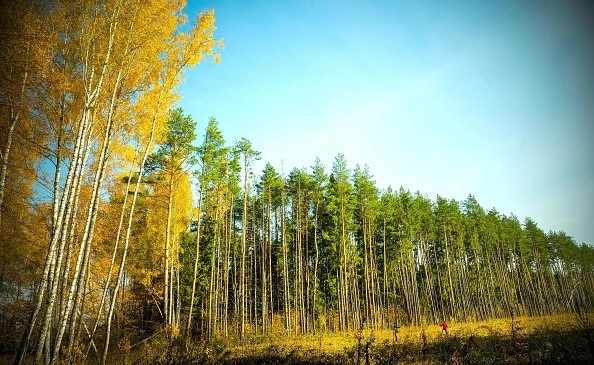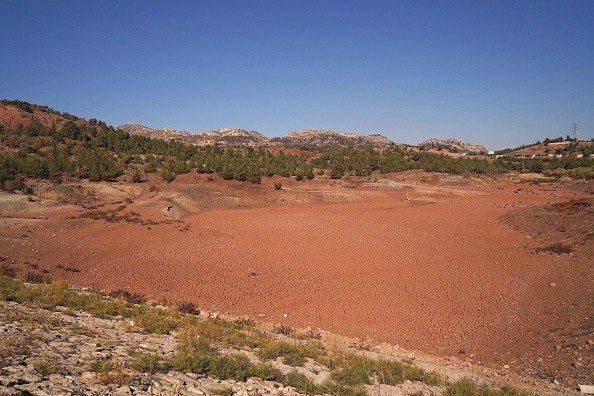Trees and soil may not have lungs, but they are constantly exhaling and inhaling. In addition to absorbing CO2, trees produce oxygen and store carbon in their trunks through photosynthesis. Carbon dioxide is released when soil bacteria break down leaves and other organic matter that falls to the ground.

Forest Fragmentation
According to Science Daily, about 30 percent of carbon emissions from fossil fuels are absorbed by forests, which is a good thing for humans: forests are referred to as a terrestrial carbon sink.
For more than a decade, Ecologist and biogeochemist Lucy Hutyra from Boston University has been studying how the planet's "lungs" are affected when big forests are cut down into smaller areas, a phenomenon known as forest fragmentation.
Forests are being divided up to make way for highways, housing, farmland, and solar farms, all of which are contributing to the state's declining forest cover. As a result of these changes to forests, there are now more locations known as forest edges-literally, the trees at the forest's perimeter.
Hutyra and her colleagues at BU have observed that these forest borders do not emit and retain carbon at the same rate as the forest centers. Forest edges in the Northeastern United States' temperate forests are functioning differently than those further from human activity.
Hutyra's team recently discovered that edge trees grow quicker than their rural cousins deep in the forest, and that soil in urban areas can hold more carbon dioxide than previously assumed. Their findings have the potential to reshape human understanding of conservation and the usefulness of urban forests.
Examining the Growth Rates of Edge Trees
Edge trees' development rates were evaluated in one of the most comprehensive studies of temperate forest edges to date by Hutyra and her team, which included collaborators from the Harvard Forest.
Hutyra's team examined over 48,000 forest plots in the Northeast United States using data from the US Department of Agriculture's Forest Inventory and Analysis program, which measures tree size, growth, and land use across the country, as per Wbur.
A 100-foot distance from the edge, they observed that trees grow nearly twice as rapidly as those in the interior.
According to Luca Morreale, a PhD student in Hutyra's lab and the paper's lead author, the trees on the periphery get more light since they aren't competing with trees in the interior forest. In addition, when a tree develops, it absorbs more carbon dioxide into the atmosphere.
Carbon storage on the fringes of a forest's fragmentation does not compensate for the negative side effects of losing trees-like releasing carbon long trapped underground back into the atmosphere-so forest fragmentation is not a solution to the problem of carbon emissions.
Rather, Morreale and Hutyra's work focuses on the need to better understand and protect existing forest borders, which are often regarded as disposable.
Effects of Forest Fragmentation
Hutyra and BU scientist Pamela Templer found that soils at the forest boundary were affected by forest fragmentation, exactly like the trees were.
A study by Sarah Garvey, a PhD student in Hutyra's lab, discovered that not only does forest edge soil release more carbon than forest inner soil, but that the soil in rural and urban forests behaves in very different ways.
Over the course of a year and a half, she made eight field visits to sites in both developed and undeveloped parts of Massachusetts, measuring the amount of carbon emitted from the soil at each location. Taking a reading at the forest edge, she and her team would then proceed about 300 feet into the woodland to obtain a second measurement.
Because of the higher temperatures at the forest's edge, leaves and organic matter decompose more quickly, forcing soil microorganisms to work harder and release more carbon dioxide. This was observed in rural areas with fewer people and structures. That was not the case with soils in urban forests, where temperatures were substantially higher and drier.
Hutyra explains that the microorganisms aren't pleased because of the extreme heat and dryness, and they aren't doing their job.
Long-term effects from unhappy soil are unknown, but Garvey says his findings suggest that urban soils like Franklin Park in Boston's largest public park could retain more carbon than previously thought. A more in-depth investigation of the mechanisms underlying the varying rates of carbon release and storage will be the subject of her future project.

Will the Increase in Carbon Uptake Last in a Warming Planet?
A double whammy of positive things may be found in the fact that urban trees and soils store more carbon, but Hutyra questions if this increase in carbon uptake will remain as the earth continues to warm.
Soil carbon losses could increase as a result of climate change, making trees near forests, whether in rural or urban areas, more vulnerable to heat and drought.
In order to have a clearer picture of how forests store carbon through time, it's important to understand the link between soil and plant life.
Researchers at Hutyra's group agree that long-term climate change forecasts should take into consideration the carbon deposited by forest edges.
Related Article : Madrid Will Plant a Massive Urban Forest to Combat CO2 Emissions in City
For more news, updates about carbon dioxide and similar topics don't forget to follow Nature World News!
© 2025 NatureWorldNews.com All rights reserved. Do not reproduce without permission.





